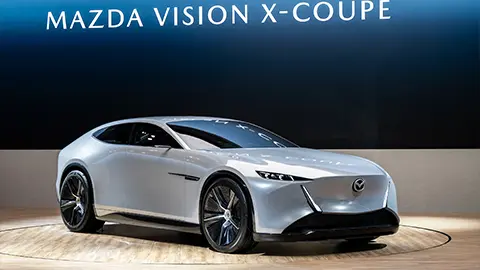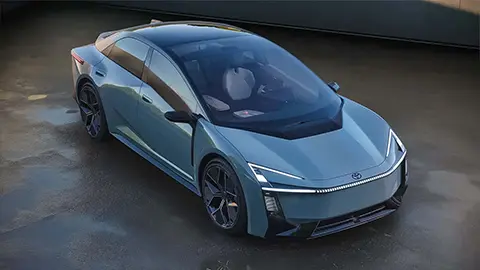Three E-Motors and a Gasoline V12: the LB744
While we talk a lot about the economy and emissions benefits of hybrid vehicles here at GreenCars, adding electrification can also boost performance. Indeed, many of the most powerful and best-performing vehicles of recent years have been hybrids or plug-in hybrids. For its new flagship model, code-named LB744, Italian automaker Lamborghini will join the ranks with a new plug-in hybrid – adding three electric motors to a powerful V12 engine to produce what it calls its first HPEV (high-performance electrified vehicle). It will even come with the ability to drive on electric power alone.
The LB744 features an unprecedented and insanely powerful setup: a 6.5-liter naturally aspirated V12 mid-engine and three electric motors. Two motors are located at the front of the car to create an “e-axle” that can drive the car in full-electric mode and provide additional traction. The third electric motor is integrated into a new 8-speed dual-clutch transmission, which is arranged for behind the combustion engine V12. The space between the seats, which the gearbox would normally occupy, is now filled with a new lithium-ion battery with high specific power that drives the electric motors.

The Lamborghini LB744 Electronic Torque Vectoring
Having two front electric motors, which can be controlled individually, the LB744 is the first Lamborghini to offer electronic “torque vectoring” – varying the power applied to each of the wheels separately to improve cornering performance and stability. The wheel on the outside of a turn can move faster than the wheel on the inside. The effect is an improvement in the car’s agility in tight corners as well as its stability in high-speed cornering, working on concert with a standard four-wheel steering system. Unlike conventional mechanical torque vectoring, the use of electric motors improves response time and only uses the brakes when strictly necessary, to maximize efficiency. Naturally, because of this setup, the LB744 is all-wheel drive.
When not accelerating, the e-axle and rear electric motor contribute to deceleration, reducing stress on the brakes while recharging the battery. This provides sufficient range for the LB744 to be driven in urban centers in zero-emissions mode, which is increasingly a requirement in large European cities. In Città (Italian for city) mode, the LB744 has 180 horsepower, more than enough for commuting duties. Other modes include Strada, Sport, and Corsa, which bring the powerful V12 engine into play and provide increasing levels of aggression and power. In Strada (highway) mode, a total of 886 hp is available; Sport ramps that up to 907 hp; and the maximum-performance Corsa gives over 1,000 hp. There’s also a Recharge mode that uses the V12 to rapidly recharge the battery to enable more all-electric driving.

Ultra-Lightweight Construction
Of course, there is more to the LB744 than its engine and electric motors. It’s the first Lamborghini to be built using a new aviation-inspired “monofusolage,” an ultra-lightweight carbon-fiber structure, which weighs 10 percent less than the chassis of the outgoing Aventador supercar, while offering a much stiffer structure at the same time. There are active aerodynamics, incorporating a movable front splitter, rear wing, and even a special roof design which channels flow to the wing. Other aerodynamic tricks include grilles inside the fenders to improve not only the cooling of the front brakes – the strip draws air from the front diffuser and channels it to the brake – but which also reduce air resistance inside the wheel well. In addition, two ducts located in front of the rear wheels collect flow from the underbody and direct it to the rear brakes for cooling.
While it is hard to call the LB744 a “green car” in the conventional sense – with all systems active including the gasoline engine, it is hardly environmentally friendly – it’s an interesting preview of technology we could eventually see in more mainstream vehicles. Its clever torque vectoring, lightweight materials, and other technology could show up in the next generation of “normal” cars, making them more efficient as well as more fun to drive.
















